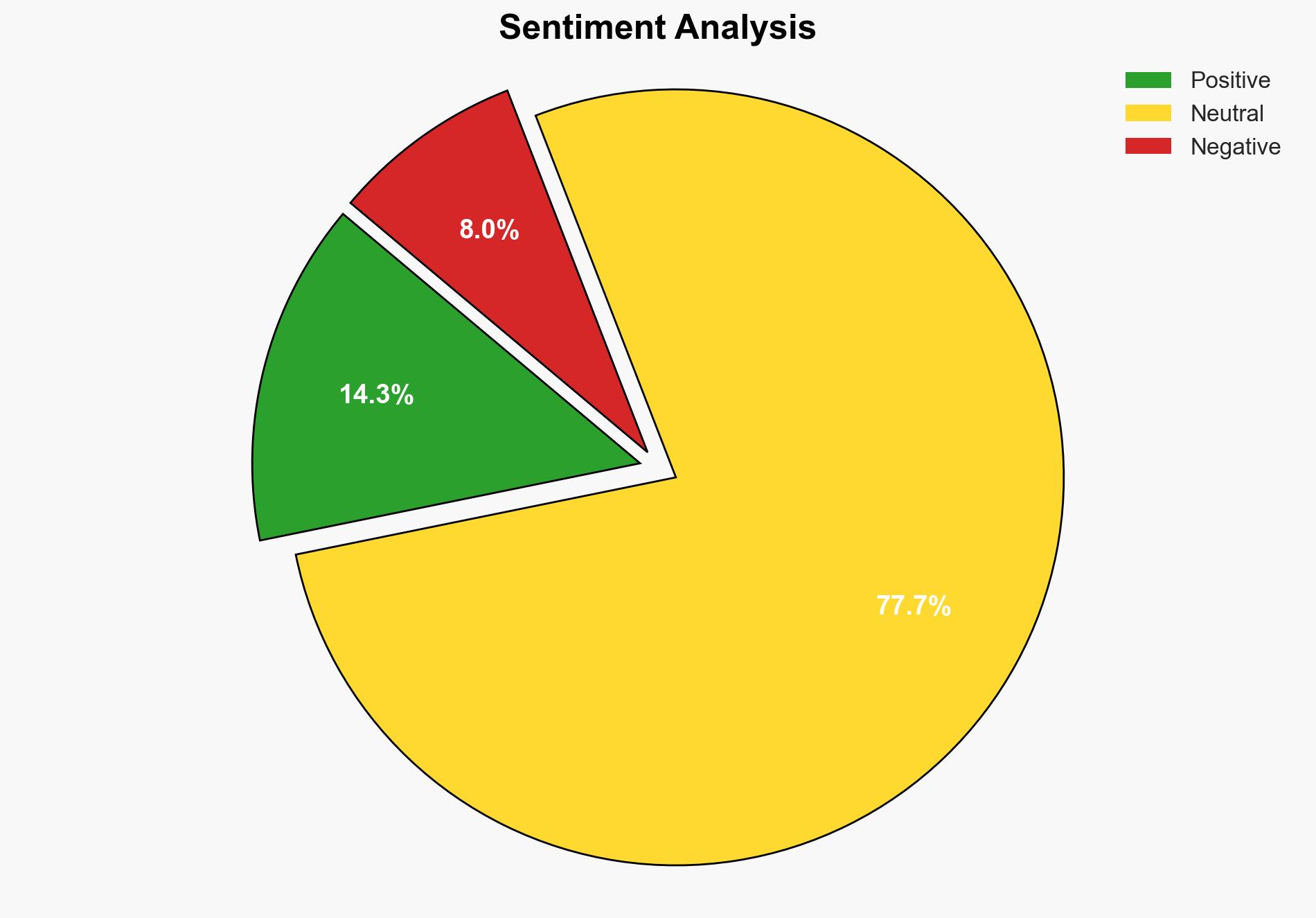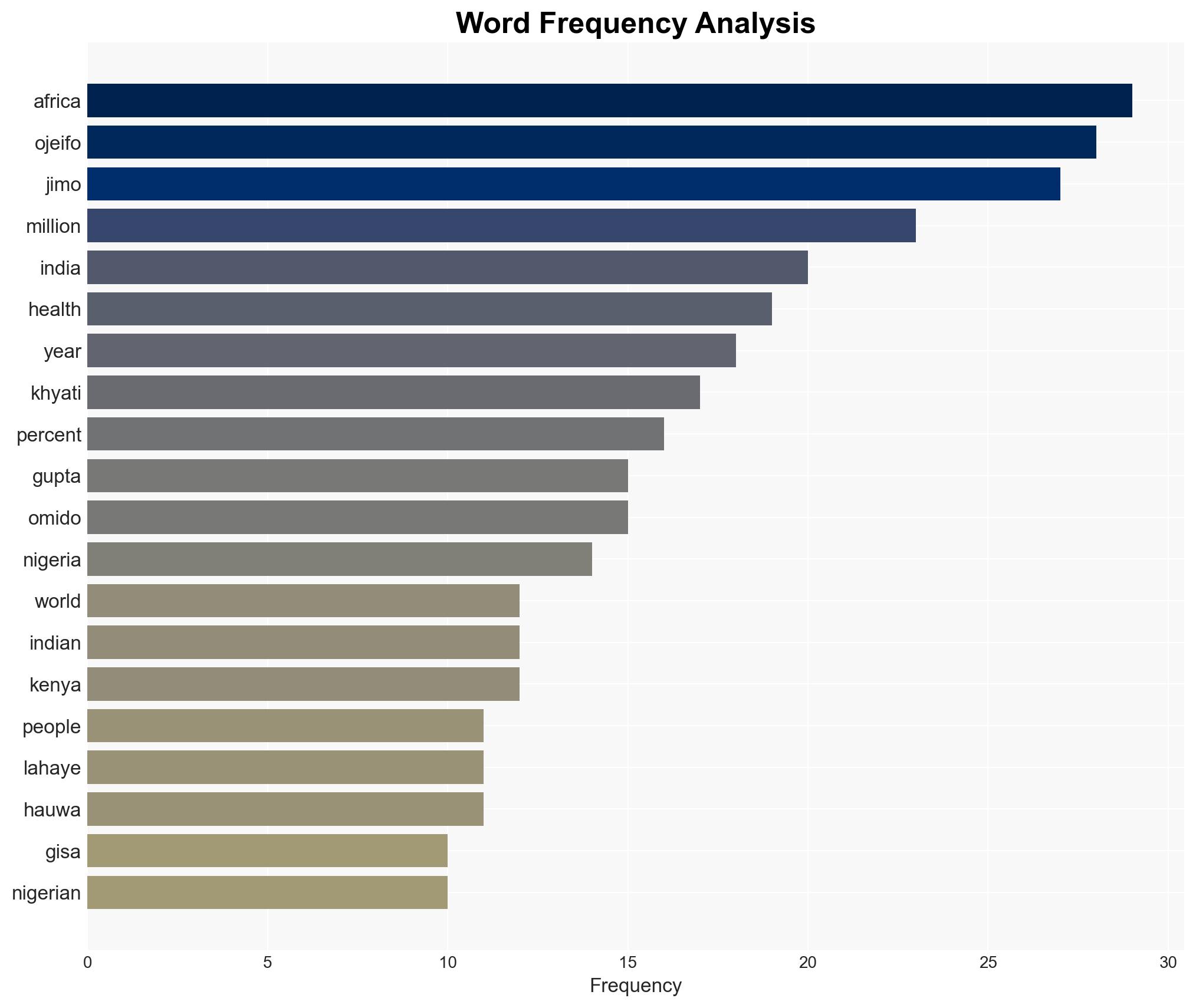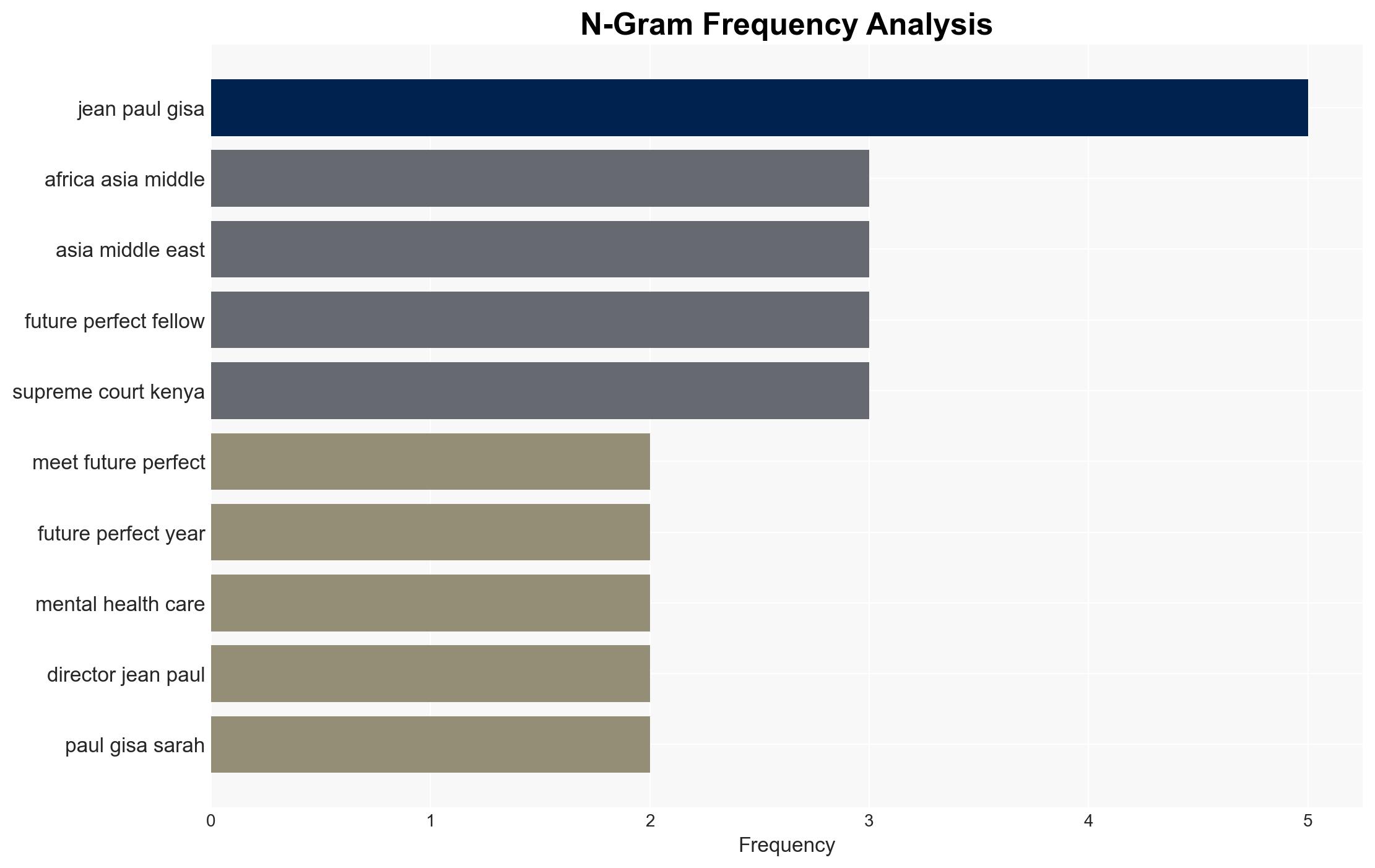How 6 organizers are building effective global health solutions from the bottom up – Vox
Published on: 2025-11-19
AI-powered OSINT brief from verified open sources. Automated NLP signal extraction with human verification. See our Methodology and Why WorldWideWatchers.
Intelligence Report:
1. BLUF (Bottom Line Up Front)
With a moderate confidence level, the most supported hypothesis is that grassroots organizers are effectively creating scalable and sustainable global health solutions by leveraging local resources and knowledge. This approach is likely to enhance resilience in global health systems, particularly in low-income regions. Recommended action includes supporting these grassroots initiatives through strategic partnerships and funding to amplify their impact.
2. Competing Hypotheses
Hypothesis 1: Grassroots organizers are successfully developing effective global health solutions by utilizing local knowledge and resources, leading to sustainable and scalable outcomes.
Hypothesis 2: While grassroots efforts are commendable, they may lack the necessary scale and resources to address global health challenges effectively, requiring significant external support to make a substantial impact.
Hypothesis 1 is more supported due to evidence of successful projects like those led by Jean Paul Gisa and Sarah Lahaye, which integrate local agricultural practices with innovative solutions. However, the scale of challenges in global health suggests that external support remains crucial, lending some credence to Hypothesis 2.
3. Key Assumptions and Red Flags
Assumptions include the belief that local solutions can be scaled effectively and that grassroots organizers have the capacity to manage complex health challenges. A red flag is the potential over-reliance on local initiatives without adequate external support, which may limit their effectiveness. Deception indicators include any overstated claims of success without empirical evidence or independent verification.
4. Implications and Strategic Risks
The primary implication is the potential for increased resilience in global health systems through localized solutions. Strategic risks include the possibility of insufficient funding and support, leading to the failure of promising initiatives. Additionally, political instability or economic downturns in low-income regions could undermine these efforts.
5. Recommendations and Outlook
- Actionable steps include fostering partnerships between grassroots organizations and international bodies to provide necessary resources and support.
- Best scenario: Grassroots initiatives receive adequate support, leading to scalable solutions that significantly improve global health outcomes.
- Worst scenario: Lack of support results in the failure of these initiatives, exacerbating existing health challenges.
- Most-likely scenario: A mixed outcome where some initiatives succeed with external support, while others struggle due to resource constraints.
6. Key Individuals and Entities
Jean Paul Gisa, Sarah Lahaye, Hakeem Jimo
7. Thematic Tags
Regional Focus, Regional Focus: Sub-Saharan Africa, South Asia
Structured Analytic Techniques Applied
- Causal Layered Analysis (CLA): Analyze events across surface happenings, systems, worldviews, and myths.
- Cross-Impact Simulation: Model ripple effects across neighboring states, conflicts, or economic dependencies.
- Scenario Generation: Explore divergent futures under varying assumptions to identify plausible paths.
Explore more:
Regional Focus Briefs ·
Daily Summary ·
Support us





